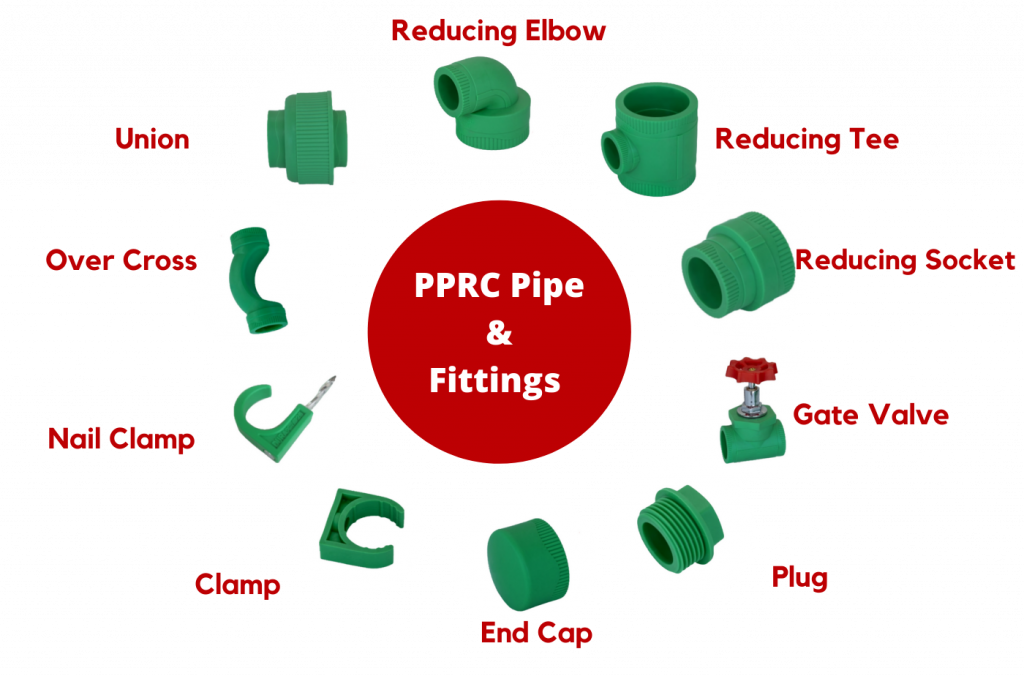Because they are constructed of contemporary polymers, PPRC pipes are flexible and indestructible. This material also makes them lightweight, portable, and simple to use. PPRC pipes are commonly used for the following applications:
- Within the structure, there are hot and cold plumbing systems.
- Solar energy systems
- Solar energy collectors
- Air-conditioning systems
- Air conditioning units
- Piping systems in the industry
PPR raw materials are classified into three types based on their heat resistance, pressure resistance, and chemical resistance. These are Type-1 (polypropylene homopolymer), Type-2 (polypropylene block copolymer), and Type-3 (polypropylene block copolymer) (Polypropylene Random copolymer). Type-3 materials are more resistant to physical and chemical impacts than Type-1 and Type-2 materials. When you notice PPRC, it signifies that your pipes are made of Type-3 materials.
Used for PPRC:
In Dura, Type-3 raw materials are generally used for the pipe and fittings sector. They are to be used for their strong resistance to heat and chemicals. The raw material of PPRC is a fundamental key for PPR Pipes and fittings’ hot and cold-water systems. Moreover, the PPR raw material monomer plastic forms random chains and protects the pipe’s body. This prevents the growth of any biological substance (bacteria, for example) on PPR pipes and fittings. It also protects against smell and retains the flavor of the fluid as it is; in other words, it does not affect the taste. It may also be produced in any color. At ideal pressure and temperature conditions, the lifetime of PPRC pipes and fittings can reach 50 years.
Main Feature of Dura PPRC System:
- With a temperature of around 20 °C and a pressure of 25 ATM, the battery has a lifespan of over 50 years.
- It can withstand temperatures ranging from 20 ° C to +95 ° C. (The temperature of the fluid in the insulating must be taken into account.)
- Because of the substance, it is long-lasting.
- Extremely resistant to chemicals and heat.
- The inner surface is brilliant and smooth.
- When PPRC is utilized for plumbing, the water’s color, odor, and taste do not alter.
- Insulates against heat and sound.
- Fittings have no diameter twist. This results in one of the best potential performances.
- Save up to 70% on installation and installation
- Friendly to the environment



